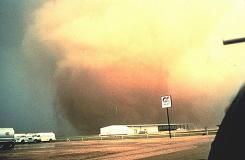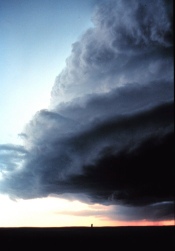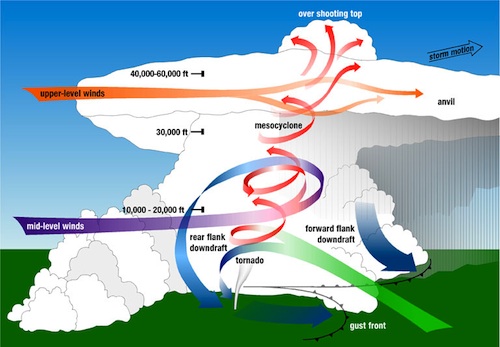Tornadoes
Tornadoes are the most powerful
weather phenomenon known. A tornado
is an intense system of low pressure with violent updrafts and
converging winds. Though tornadoes have been intensely studied for
years, the mechanism that actually creates them still eludes us.
Tornadoes have been documented in most all the regions of the Earth,
though they are most prevalent in the United States. Figure 8.28 Supercell thunderstorm are especially capable
of spawning tornadoes. Tornadoes are spawned from severe
thunderstorms. Wind shear, where winds are traveling at
different speeds and from different directions aloft cause rotation of
air about a horizontal axis within the thunderstorm. The rotating
circulation is tilted into the vertical by the updrafts of air in a
severe thunderstorm. As the rotating air increases in height and
shrinks in size a mesocyclone is formed.
For whatever reason, a tornado funnel is spawned within the
mesocyclone. [ The funnel can remain aloft,
twisting and turning without wreaking much havoc below, but is most
destructive when it touches the ground. A tornado can vary in diameter
from a few hundred feet to greater than a mile. Tornadoes typically
move across the surface at speeds ranging from 22 - 33 mph (10 - 15
meters per second). [
Figure 8.29 Tornado Formation Tornadoes that develop over water are called waterspouts. Waterspouts my orignate over water or a tornado passes from land to water. View the video "Watersputs" for more.
|



